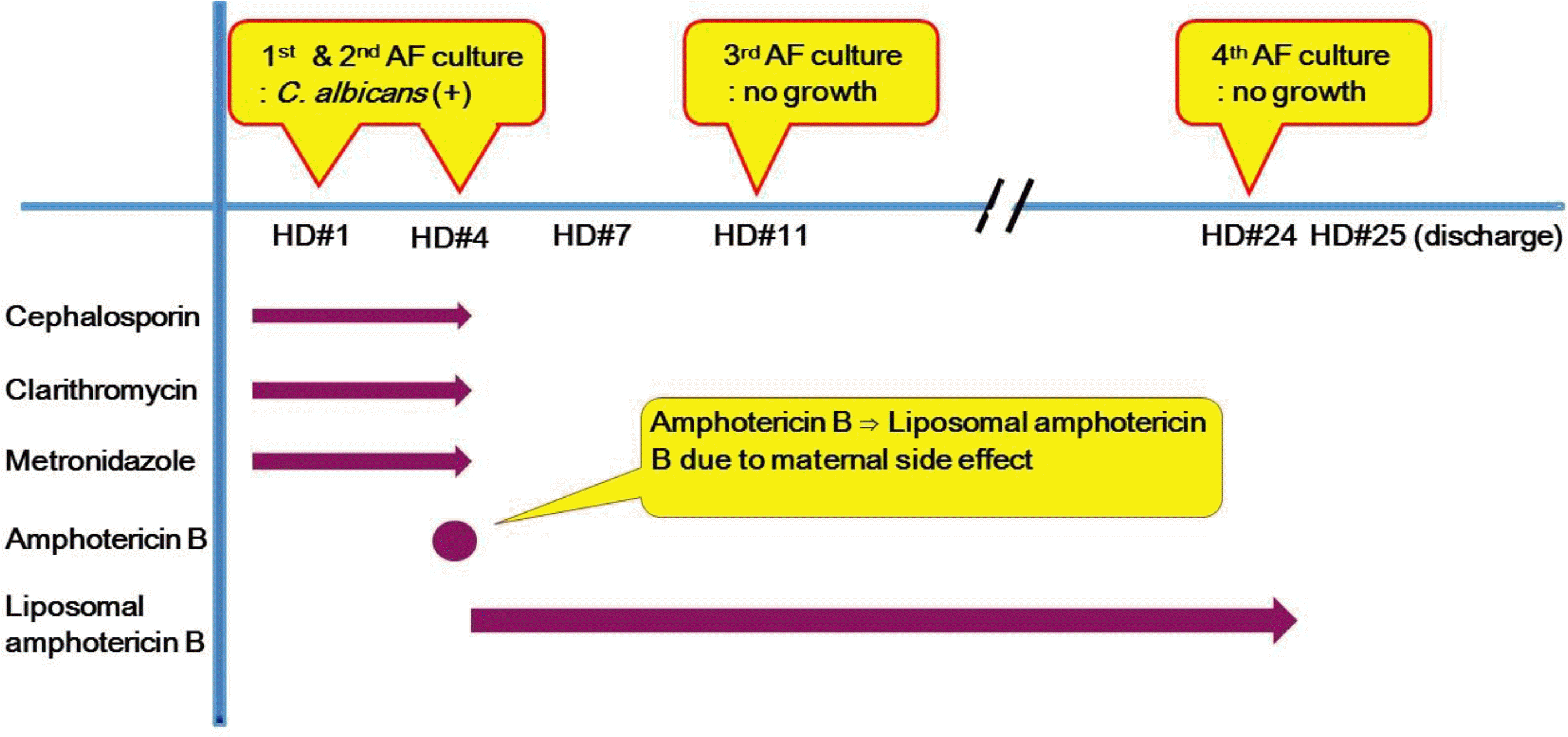Abstract
Intra-amniotic Candida infection is uncommon but the consequence can be catastrophic. Transcervical amphotericin B and intra-amniotic fluconazole administration were identified in the literature. We present a case with intact membranes and ongoing pregnancy treated by maternal intravenous liposomal amphotericin B. A primipara who underwent cerclage placement before fetal viability was diagnosed with intra-amniotic Candida infection. Although maternal intravenous liposomal amphotericin B eradicated fungi in the amniotic cavity, Escherichia coli invasion caused devastating chorioamnionitis. The newborn delivered at 27+3 weeks’ gestation did not survive due to respiratory distress syndrome and sepsis. Despite negative conversion of intra-amniotic culture results for fungi after treatment, another pathogen such as bacteria could ascend into the amniotic cavity via weakened membranes. Clinicians should consider broad-spectrum antibiotics as well as antifungal agents in this setting.
REFERENCES
1). Chaim W., Mazor M., Wiznitzer A. The prevalence and clinical significance of intraamniotic infection with candida species in women with preterm labor. Arch Gynecol Obstet. 1992. 251:9–15.

2). Roqué H., Abdelhak Y., Young BK. Intra amniotic candidiasis. Case report and meta-analysis of 54 cases. J Perinat Med. 1999. 27:253–62.

3). Shalev E., Battino S., Romano S., Blondhaim O., Ben-Ami M. Intraamniotic infection with candida albicans successfully treated with transcervical amnioinfusion of amphotericin. Am J Obstet Gynecol. 1994. 170(5 Pt 1):1271–2.

4). Bean LM., Jackson JR., Dobak WJ., Beiswenger TR., Thorp JA. Intra-amniotic fluconazole therapy for candida albicans intra-amniotic infection. Obstet Gynecol. 2013. 121(2 Pt 2 Suppl 1):452–4.
5). Lee SE., Romero R., Park CW., Jun JK., Yoon BH. The frequency and significance of intraamniotic inflammation in patients with cervical insufficiency. Am J Obstet Gynecol. 2008. 198:633. .e1-8.

6). Dean JL., Wolf JE., Ranzini AC., Laughlin MA. Use of amphotericin B during pregnancy: case report and review. Clin Infect Dis. 1994. 18:364–8.

7). Kim CJ., Romero R., Chaemsaithong P., Chaiyasit N., Yoon BH., Kim YM. Acute chorioamnionitis and funisitis: definition, pathologic features, and clinical significance. Am J Obstet Gynecol. 2015. 213(4 Suppl):S29–52.





 PDF
PDF ePub
ePub Citation
Citation Print
Print



 XML Download
XML Download